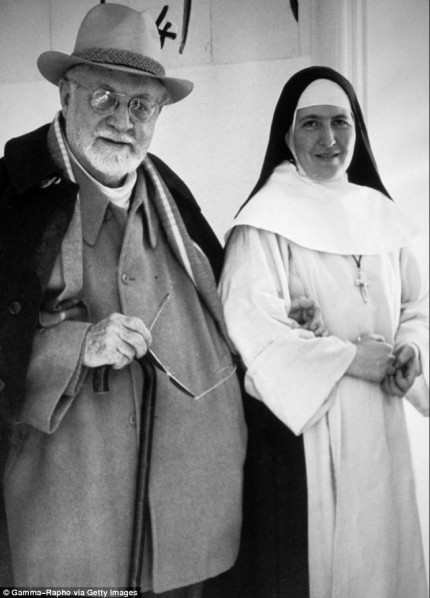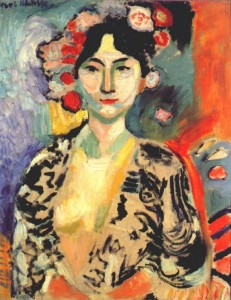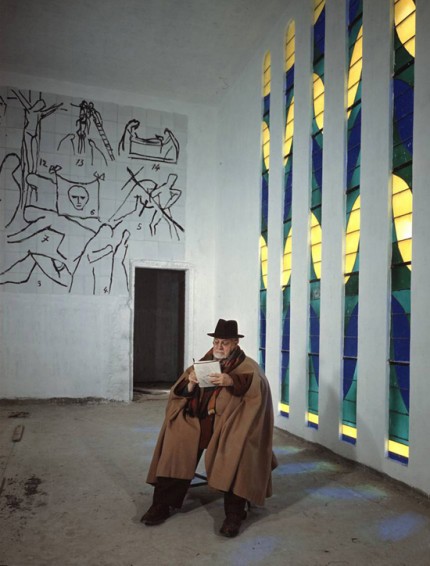Matisse & the Nun, Model & a Collaborator
A Model for Matisse available on netflix. (see nice photos)
Monique Bourgeois 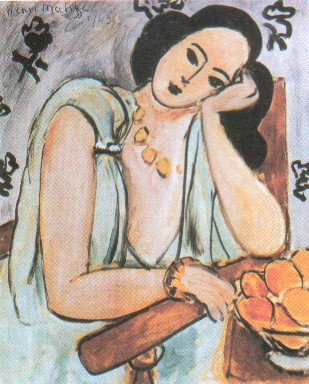 later Sister Jacques-Marie
later Sister Jacques-Marie
NY times on Sister Jacques-Marie
As a painter he loved the splendid mass of her dark hair and the way her neck rose from her shoulders like a white tower,” Hilary Spurling, his biographer, wrote.
Monique Bourgeois, as Sister Jacques-Marie was known before she took orders, was the 21-year-old daughter of a soldier. Her upbringing had been painfully strict: she had never worn make-up or read a book without asking her mother’s permission. Her parents told her she was ugly and would never amount to anything.
When Matisse took her on, she was astonished. She certainly didn’t fit the description of the girl he had advertised for. ‘Young I certainly was,’ she later said. ‘But pretty? Hmmm.’
Matisse, however, was charmed.
‘Who said you were ugly?’ he asked her. ‘Your parents?’
According to Ms. Spurling’s book, “Matisse the Master,” the lonely Matisse “found warmth and comfort in the uncomplicated affection” of the nun. Accounts of the chapel’s genesis vary, but according to Ms. Freed, the filmmaker, Sister Jacques-Marie sketched an Assumption for Matisse and he urged her to turn it into a stained-glass window. It happened that the rest home, Foyer Lacordaire, was hoping to convert a ramshackle garage used for prayer into a full-fledged chapel, and Matisse wondered if displaying the window could help raise money.
With the aid of a monk convalescing at the rest home, Matisse roughed out a sketch for a chapel, and Sister Jacques-Marie made the working model. Soon Matisse immersed himself in every aspect of the chapel, from the brushstroke sketches of a Stations of the Cross mural to the vestments and the slender Crucifixion altarpiece. The stained-glass windows, with one pair, “Tree of Life,” suggestive of a flowering cactus, are regarded as particular triumphs; they allow lemon-yellow, bottle-green and blue light to play capriciously against white-tiled walls and the marble floor.
Sister Jacques-Marie did preliminary design work and offered candid evaluations. As important, she ran interference with her local superior, who disapproved of a chapel designed by an artist known for his nudes. In the end, Matisse described the chapel as “their shared project.” When Sister Jacques-Marie told Matisse that she believed he was inspired by God Almighty, he replied gently, “Yes, but that god is me.”
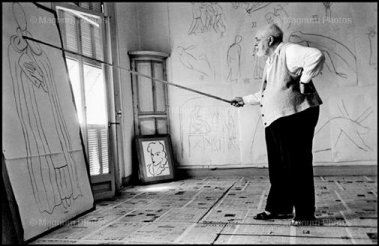 Photo of Matisse
Photo of Matisse
by Robert Capa (Previous post War and Ingrid Bergman)
